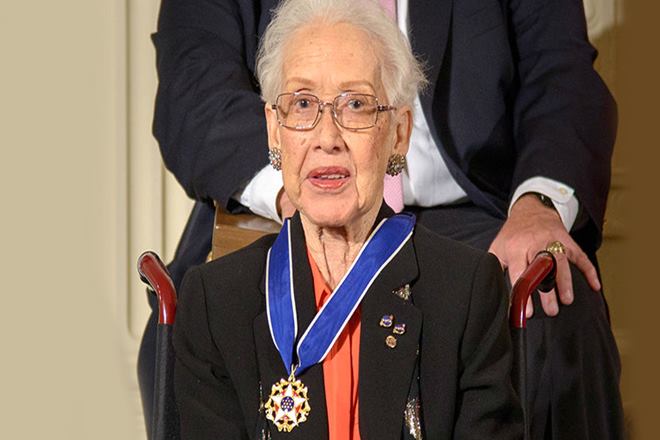Katherine Johnson, the NASA mathematician who played a prominent role in NASA’s first moon mission breathed her last on Monday at an age of 101. First Post reported that Katherine for a major part of her life remained unsung until the film made on her life “Hidden Figures” got her some much-deserved glory and acknowledgement for her contributions. Leading a life in the America of 1960s which reeked of the worst form of racism, Katherine worked diligently for 33 years at NASA making a lasting contribution to countless space missions. This was the time when even the workspace of a progressive scientific organisation like NASA had racial demarcations. There were separate dining halls and washrooms for people of different colours. Asked to comment on the inherent racism at the NASA, Katherine’s common refrain would be that she was too busy in her work to actually bother about racism.
Those were the days when Katherine along with her workers would be known as “computers” as there were no digital machines and computation was to be done manually. Despite working as a back-room person away from the limelight of media, when it came to calculations, Katherine was the go-to person for great astronauts like John Glenn. Once Glenn had insisted on getting the numbers cross-checked by Katherine for his earth-orbiting flight in 1962. “Get the girl to check the numbers,” he had said.
After retiring from NASA in the year 1986, it was only at the beginning of the next century when the world recognised the overwhelming contribution of Johnson in space science. Former U.S President Barack Obama awarded her with the Presidential Medal in 2015 and he was so impressed with her life that she found a mention in his State of the Union address in 2016. “Hidden figures”, which made her the household name in the country, was nominated for the Oscars and a standing ovation was accorded to her at the awards. Her alma mater – West Virginia State University – where she graduated amongst a handful of African-American graduates in 1938 named a scholarship after her. The journey of Johnson began from humble origins as her father was a farmer and mother a former teacher. But her parents ensured that their child received proper education. In what has now become the part of folklore, Johnson was so obsessed with counting numbers that she would even count the steps she covered and utensils she cleaned.


